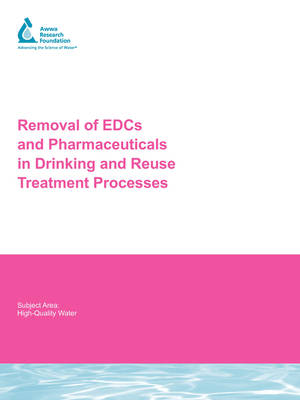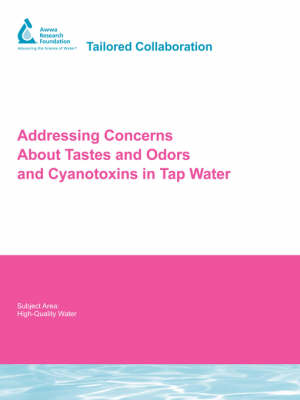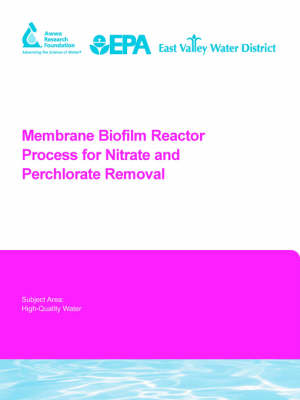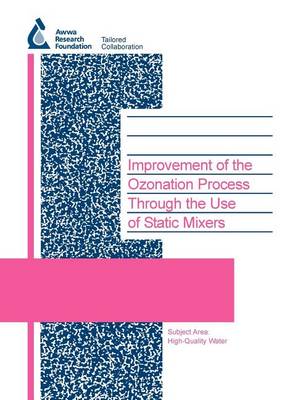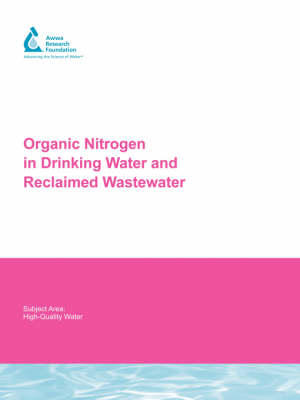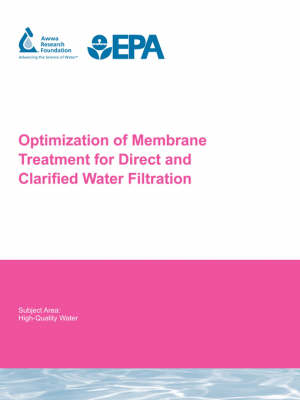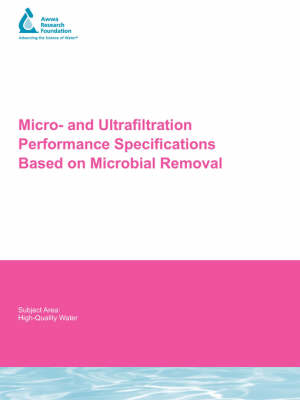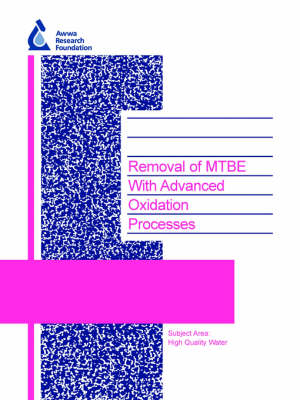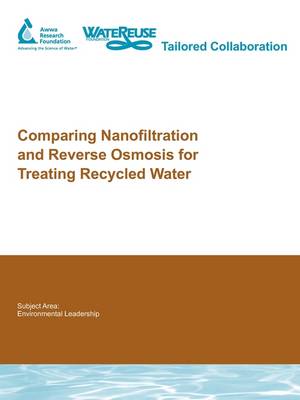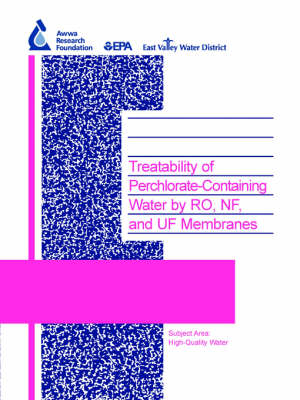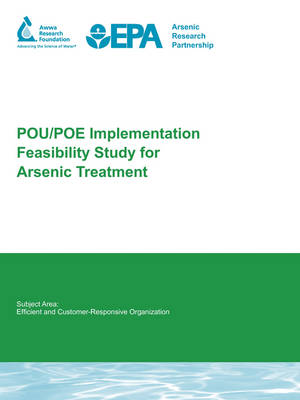Water Research Foundation Report
15 total works
Removal of EDCs and Pharmaceuticals in Drinking Water
by Shane A. Snyder, Eric C. Wert, Hongxia (Dawn) Lei, Paul Westerhoff, and Yeomin Yoon
The objectives of this study were to (1) select a diverse group of representative endocrine disrupting chemicals (EDCs) and pharmaceuticals, (2) develop a robust analytical methodology capable of trace detection of target compounds in a variety of water matrices, (3) determine the occurrence of target compounds in U.S. drinking waters, (4) evaluate the EDC/pharmaceutical removal potential of conventional and advanced drinking and reuse water processes, and (5) evaluate computer models to predict target compound properties and fate.
This report provides fundamental information on the removal of several classes of pharmaceuticals, personal care products, and suspected endocrine disrupting chemicals by conventional and advanced water treatment processes. A detailed description of analytical methods is provided, including information on sample preservation, extraction, and instrumental analysis. The report provides some of the first U.S. occurrence data for these emerging contaminants in raw and finished drinking water supplies. From the treatment and occurrence information, compounds with likely occurrence can be selected for monitoring programs that will represent the fate of various classes of emerging contaminants. Computer models are described that can be used to predict properties and fate of future water contaminants.
Contribution of Wastewater to DBP Formation
by Stuart W. Krasner, Paul Westerhoff, Baiyang Chen, Bruce E Rittmann, Gary Amy, Zaid K. Chowdhury, and Shahnawaz Sinha
The objectives of this project were to (1) determine the formation, occurrence, and control of disinfection by-products (DBPs) and DBP precursors in wastewater and their impact on downstream drinking water sources; (2) evaluate the fate and transport of wastewater-derived DBPs and precursors in receiving waters, as well as their removal through different drinking water unit processes; and (3) evaluate treatment strategies at wastewater and drinking water treatment plants to reduce DBPs that best balance societal benefits. The researchers (1) conducted a full-scale survey of wastewater and drinking water plants, as well as effluent-impacted rivers, lakes, and groundwaters; (2) compiled a database of first-principle fate-and-transport parameters for DBPs; (3) performed DBP and DBP precursor fate-and-transport bench-scale experiments; (4) evaluated the treatability of EfOM with drinking water treatment processes.; (5) used simple and advanced NOM characterization techniques; (6) measured regulated and emerging DBPs, as well as conducted formation potential tests; and (7) analyzed for a pharmaceutical (primidone) that is a conservative tracer of wastewater influences in drinking water supplies. This report will be available as a Pay-Per-View item only
Communicating the Value of Water
by Edward G. Means, Zaid K. Chowdhury, G. Westerhoff, L. Passantino, and J. Ruettan
The specific objectives were as follows:
- Research available studies related to communication with customers and stakeholders both in the water utility field as well as other organizations that require public support to glean "lessons learned"
- Supplement the available studies with surveys and workshops that are directly related to communicating the value of water
- Develop a branding strategy that builds public trust and communicates the utility value proposition to the customer and stakeholder
- Develop specific guidelines, plans, and processes, along with communication tools, that can be used by water utilities to devise a communication program for their water utility
The approach for completing this project started with an extensive literature search on the topic of communicating the value of water followed by several workshops, meetings, focus groups, and interviews to help identify key messages to be used in communications plans. The information collected in these project activities was summarized and used to develop a step-by-step model for communications planning. The model incorporates aspects of strategic planning, communications gap analysis, behavioral gap analysis, branding, and national communications efforts. An electronic Communications Toolkit providing various tools and example communications materials to assist utilities was also developed.
Natural Organic Matter Fouling of Low-Pressure Membrane Systems
by J. Lozier, H. Huang, T Young, C. Mysore, L. Cappucci, Gary Amy, N Lee, J. G. Jacangelo, C. Emeraux, and J. Clouet
This report is available as a Pay-Per-View item only.
NOM exists in three primary forms (allochthonous, autochthonous, and effluent-derived), with a variety of components having differing fouling tendencies. LP membranes comprise hollow fibers of differing polymeric materials, with a range of properties that likewise influence fouling propensity. Fouling management strategies (backwash, air scrub, chemical cleaning) employed with LP membrane systems differ from supplier to supplier. This, combined with a number of the methods used to reduce NOM levels prior to membrane treatment (e.g., coagulation, clarification), further complicate the understanding of NOM fouling.
The overall goal of this project was to investigate the specific contributions of the different types of natural organic matter (NOM) to microfiltration/ultrafiltration (MF/UF) fouling. The intent was to develop a surrogate test or index that could be used to predict NOM fouling at low cost through a combination of source water characterization and rapid bench-scale testing. The research incorporated bench-, pilot- and full-scale investigations. Testing was conducted with four source waters, selected to capture the fouling characteristics of the three primary types of NOM. Bench testing use a stirred, cell apparatus and three flat sheet membrane types, representing commercially dominant MF and UF hollow fiber membranes of the same polymer types. Hollow fiber bench testing used two PVDF and two PES membranes operated in both sequential and alternating filtration/backwash mode. Pilot testing included PVDF MF and UF and PES UF systems operated on three of the four source waters and incorporated a host of fouling management strategies. Full-scale investigations captured operating data from several plants having differing levels and types of NOM.
Addressing Concerns About Tastes and Odors and Cyanotoxins in Tap Water
by Randy Gottler, Jennifer Calles, Paul Westerhoff, and Morteza Abbaszadegan
Treatment removal of algal metabolites demonstrated that microcystins measured lower after the addition of powdered activated carbon (PAC). Treatment removal showed that low levels of chlorine oxidize microcystins given sufficient contact time. Water distribution samples were split between a flavor profile analysis (FPA) panel and a gas chromatograph mass spectrometer (GC/MS). Data generated between the FPA and the GC/MS showed high variability for geosmin and MIB. FPA results showed a direct correlation with MIB and geosmin, but were weak for cyclocitral. FPA results could be predicted with MIB/geosmin plots and with a MIB, geosmin, and cyclocitral plot.
DBP Control in High Bromide Water While Using Free Chlorine During Distribution
by Patrick Carlson, Stephen Booth, Cristina Fonseca, Justin Sutherland, and Gary Amy
Membrane Biofilm Reactor Process for Nitrate and Perchlorate Removal
by S. Adham, T. Gillogly, G Lehman, Bruce E Rittmann, and R. Nerenberg
Improvement of the Ozonation Process Through the Use of Static Mixers
by C. Mysore, J. Leparc, Daniel W. Smith, S. Craik, G. Finch, R Lake, P. Agutter, C. de Traversay, D. Wolbert, and Gary Amy
Organic Nitrogen in Drinking Water and Reclaimed Wastewater
by Paul Westerhoff, W Lee, J.-P. Croue, H. Gallard, and Gary Amy
The project involved three phases. First, several pretreatment processes were evaluated to selectively remove inorganic nitrogen from samples, thus allowing more accurate and a potentially direct quantification of DON. Second, a survey of 28 water treatment plants was conducted during two different seasons to assess DON and related organic matter occurrence. Additional sampling of reclaimed wastewater systems was also conducted. Third, laboratory experiments were conducted with alum and cationic polymer coagulants, activated carbon, or disinfectants (free chlorine or monochloramine) to assess the ability to remove DON and understand its reactions with disinfectants.
Optimization of Membrane Treatment for Direct and Clarified Water Filtration
by S. Adham
To evaluate the impact of pretreatment and water quality on the membrane performance, this project was implemented with four major tasks: literature review, bench-, pilot-, and full-scale studies. The literature review covers conference proceedings and journal papers regarding the effects of pretreatment on membrane filtration. The primary focus of the bench-scale testing is to examine membrane fouling mechanisms by specific fractions of constituents in natural water. The effects of various pretreatment chemicals and pretreatment processes on each fraction were also assessed. Pilot testing is conducted on three different water sources using similar pretreatment conditions of the bench-scale study for providing the correlation among the different scales. The full-scale evaluation provides insight on operational and design issues that were impacted by membrane pretreatment The project findings provide guidance to water utilities for integrating MF/UF membrane process into existing or new water treatment plants. It is important to note, however, that results presented in this study may not apply to all cases and situations. Therefore, it is recommended that the overall conclusions be used to inform and guide utilities with the most cost-effective and suitable approach (i.e., bench-, or pilot-scale) to address specific concerns and optimize membrane performance.
Micro and Ultrafiltration Performance Specifications Based on Microbial Removal
by J. G. Jacangelo, Nancy L. Patania Brown, Alain Madec, K. Schwab, Debra E. Huffman, Gary Amy, C. Mysore, J. Leparc, and Annette Prescott
This report provides a peer-reviewed, standardized methodology with which to characterize membranes from a microbial perspective at bench scale, which is a benefit to both utilities and manufacturers. From a regulatory perspective, low pressure membranes are part of the microbial toolbox associated with the Long-Term 2 Enhanced Surface Water Treatment Rule. As a result of this project, bench-scale testing of Cyrptosporidum removal was included as methodology to evaluate new membrane products. It is important to note that the protocol was designed for both scientific rigor and ease of implementation.
Removal of MTBE with Advanced Oxidation Processes
by Michael Kavanaugh, Zaid K. Chowdhury, S. Kommineni, S. Liang, J. Min, J.-P. Croue, N. Corin, Gary Amy, E Simon, and W Cooper
Comparing Nanofiltration and Reverse Osmosis for Treating Recycled Water
by Jorg E. Drewes, C. Bellona, Pei Xu, Gary Amy, G. Filteau, and G. Oelker
The purpose of this study was to explore whether nanofiltration (NF) and ultra-low pressure reverse osmosis (ULPRO) membranes can consistently meet potable water quality requirements with respect to total organic carbon (TOC), total nitrogen, and regulated and unregulated trace organic compounds. The goals were also to determine whether or not operating characteristics of NF and ULPRO membranes (such as flux, fouling/scaling, and cleaning frequencies) are comparable to conventional thin-film composite RO membranes and operating feed pressure requirements are significantly lower than conventional RO.
This work involved the development and validation of a laboratory-scale membrane testing protocol to select viable membranes for pilot- and full-scale operation. This selection protocol balanced operational characteristics with product water quality and allowed for a pre-selection of potentially viable candidate membranes. Membranes considered for selection were characterized as thin-film composite polyamide membranes and included commercially available ULPRO and NF membrane products. Three candidate membranes were selected and each tested using a 70 L/min (18 gpm) membrane pilot skid for at least 1,300 hours on microfiltered feed water at two full-scale facilities. Findings of this study were compiled into a model framework to describe and predict the rejection of organic micropollutants during NF or RO treatment.
Treatability of Perchlorate-Containing Water by RO, NF and UF Membranes
by Gary Amy, Yeomin Yoon, J. Yoon, M. Song, J. Pellegrino, S. Liang, K. Scott, and J. Min
